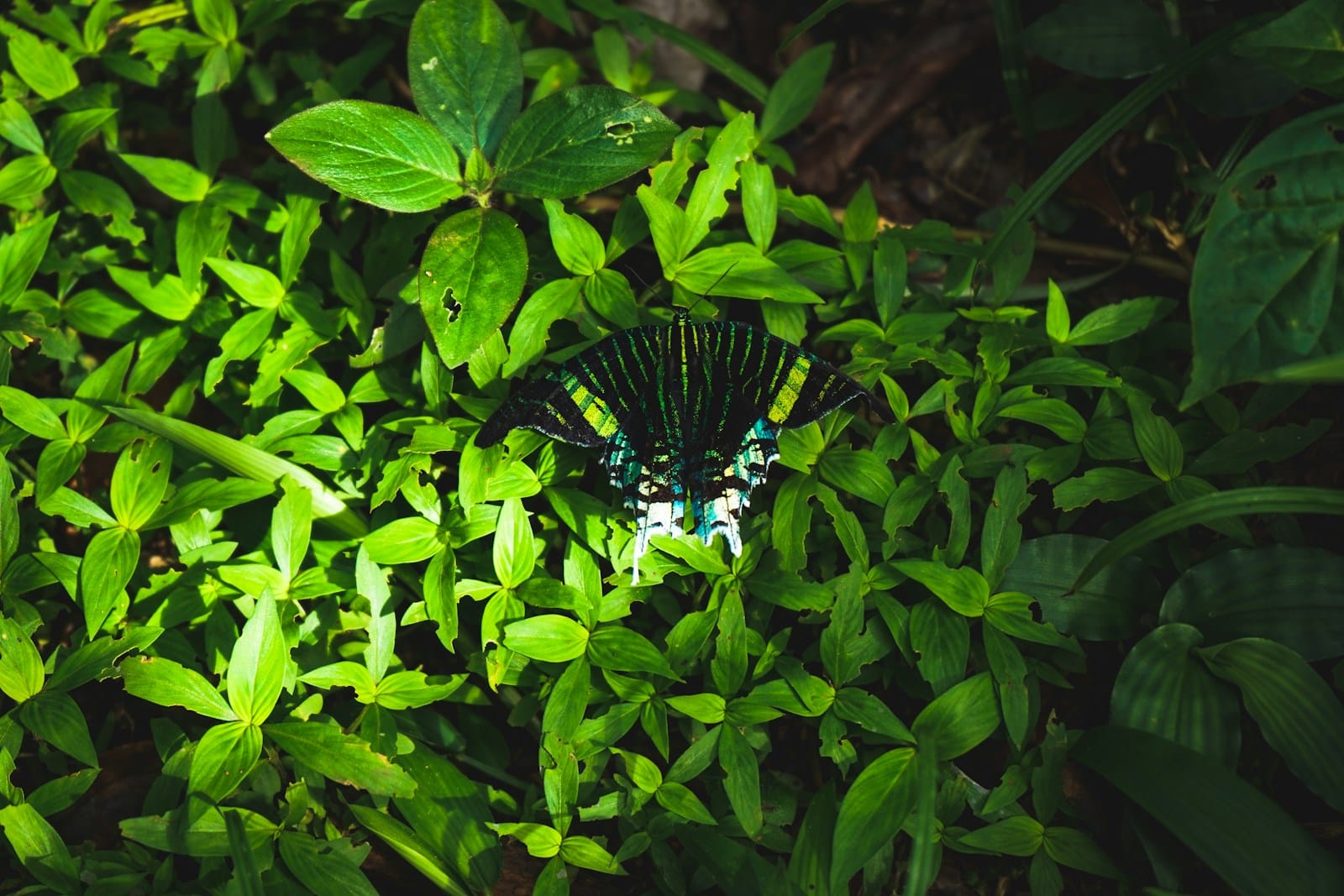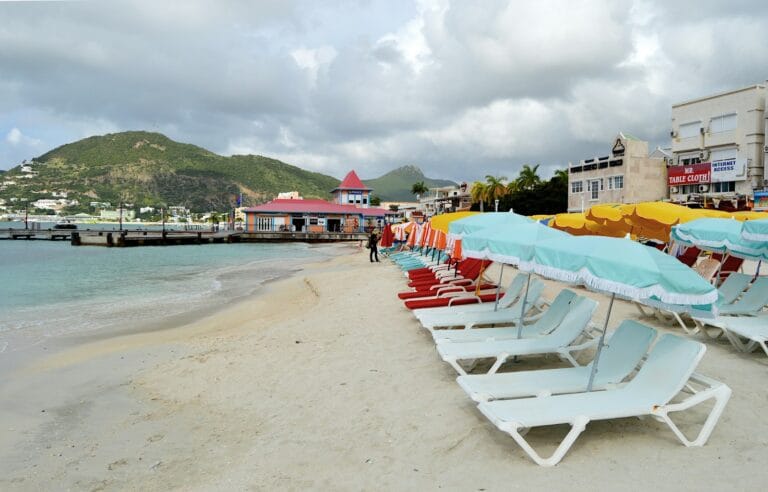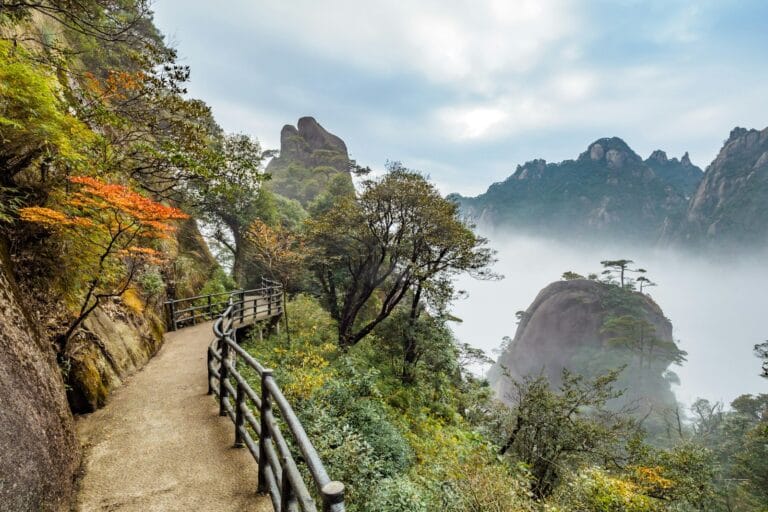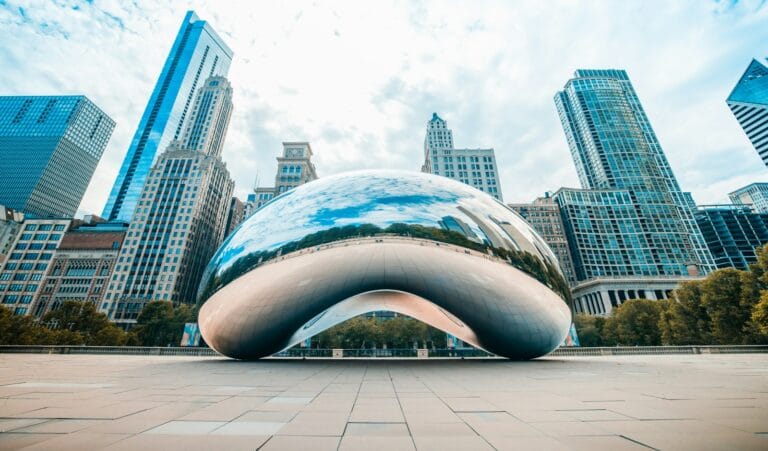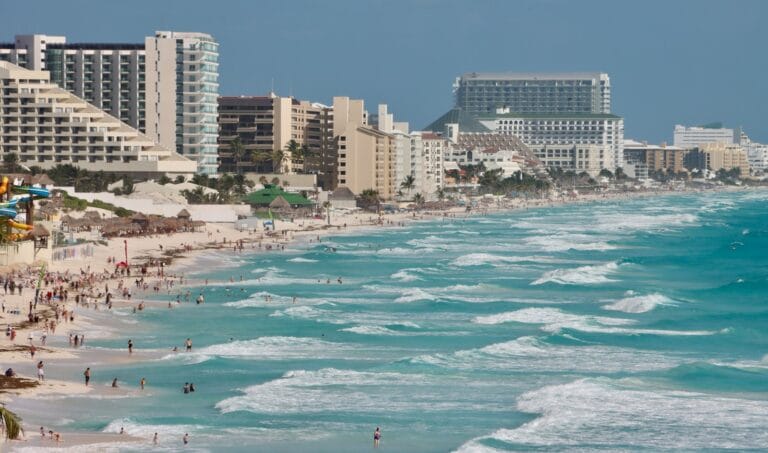French Guiana Travel Guide: Untamed Jungles & Space frontiers
Intro to French Guiana Travel Guide
Nestled on the northeastern shoulder of South America, French Guiana blends Amazonian biodiversity, Creole rhythms, and European influence like nowhere else on Earth. This overseas department of France is a wild frontier of rainforest adventures, space launches, and colonial echoes — all accessible with a euro and a French SIM card.
Start planning your journey with our complete French Guiana Travel Guide — covering when to go, how much it costs to travel, regional highlights, top things to do, unforgettable French Guiana tours, and safety tips for your rainforest escape.
Looking for immersive French Guiana tours? From jungle treks and wildlife cruises to rocket launch viewing and island excursions, discover action-packed itineraries in our French Guiana Tours page.
Where to Go in French Guiana
Cayenne | Kourou | Matoury | Remire-Montjoly | Saint-Laurent-du-Maroni | Sinnamary
💡Quick Facts:
Destination: French Guiana
Continent: South America
Country: France (Overseas Department/Territory)
Capital: Cayenne
Area: ~83,534 km²
Population: ~310,000
Density: ~4 people/km²
Regions/Subregions: Cayenne, Saint-Laurent-du-Maroni, Kourou, Maripasoula, Oiapoque border region
Official Language: French
Regional Languages: Creole, Amerindian languages, Portuguese (Brazilian influence), Sranan Tongo
Currency: Euro (EUR, €)
Time Zone: UTC -3 (no daylight savings)
Airports: Cayenne–Félix Eboué International Airport (CAY)
Climate: Equatorial – hot, humid, heavy rainfall seasons
Known For: European Spaceport in Kourou, Amazon rainforest, Maroni River, Surinamese and Brazilian border culture, Creole cuisine, Carnival.
🛂Arrival Info:
Entry requirements follow France/Schengen visa rules; EU citizens can enter visa-free.
Non-EU travelers may need a Schengen visa (check with French consulates).
Stay duration usually up to 90 days within 180 days.
Visa & customs info (official).
🏥Health Info:
Vaccinations: Yellow fever (mandatory), hepatitis A, typhoid, routine vaccines.
Malaria, dengue, and Zika present in forested areas. Mosquito protection essential.
Healthcare limited outside Cayenne and Kourou; French-level care in major towns.
Strongly advised to have comprehensive travel insurance covering evacuation.
🚑 Check travel insurance options for travel emergencies, delays, and medical needs abroad — Get coverage here
💉 Stay Informed with Official Updates: WHO – International Travel & Health | CDC – Travel health updates
🚨Travel Advisory:
French Guiana is generally stable under French administration.
Risks: petty theft in Cayenne, illegal gold mining zones (unsafe), jungle travel hazards.
Borders with Suriname and Brazil can have smuggling activity—avoid unauthorized crossings.
Check advisories: France Diplomatie or your government’s travel site.
🌍Track Real-Time Official Updates: US Travel Advisory | UK Foreign Travel Advice | Government of Canada | NZ SafeTravel
🥳Holidays:
Carnival Season – January to February, major cultural parades in Cayenne and Kourou.
Bastille Day (14 July) – French national holiday, local celebrations.
All Saints’ Day (1 November) – family gatherings, cemetery visits.
Local observances tied to Catholic calendar and Creole traditions.
💰Visitor Info:
Currency: Euro; ATMs in towns, cash needed for remote areas.
Tipping: Not obligatory but rounding up is common.
Duty-free limits follow EU rules.
Budget: €60/day (budget) to €200+ (comfort/luxury).
Tourist tax may apply in hotels.
🛫Airports:
Cayenne – Félix Eboué Airport (CAY): – international, flights from Paris Orly, Fort-de-France, Guadeloupe, Belém (Brazil).
Nearest airports outside: Paramaribo (Suriname), Macapá (Brazil).
Airport shuttle, taxis, and rental cars available.
🧳 Delayed or canceled flight? Check if you’re eligible for compensation
🚍Transport:
No railways. Intercity travel mainly by road and river.
Roads connect Cayenne, Kourou, Saint-Laurent-du-Maroni; jungle areas need boats or small aircraft.
Driving: right-hand side, EU license valid; rental cars available.
Public transport: local buses/minibuses limited; taxis common but costly.
Pirogues (motorized canoes) used on rivers.
🚗 Book reliable airport transfers and in-city rides in advance. Reserve your ride here
🛰️Connectivity:
Mobile carriers: Orange, Digicel, SFR Caraïbe.
4G in towns, limited coverage in interior.
SIM/eSIMs available at airports and shops.
Public Wi-Fi rare outside hotels/cafés.
🛜 Stay connected abroad with affordable eSIM data packs. Get your eSIM here
📜Laws & Etiquette:
Follows French law; strict drug penalties.
LGBTQ+ travelers legally protected; social acceptance varies.
Casual dress fine; modest attire in churches/indigenous villages.
Ask before photographing people, especially in remote communities.
👮Emergency Info:
Emergency: 112 (EU standard).
Tourist police available in Cayenne.
Embassies/consulates mainly in Cayenne (French prefecture offices serve as authority).
River and jungle tours should be guided for safety.
🏛️ Use embassy locator tools: Embassies Worldwide
🌞Weather:
Equatorial climate: hot (27–31°C year-round), high humidity.
Rainy seasons: December–July (peaks in May–June).
Drier period: August–November (best for travel).
Flooding and river swell possible during peak rains.
🌦️ Stay prepared—check the weather forecast for your destination — Weather Forecast
French Guiana by Region – Where to Go
Explore French Guiana by its key regions: from coastal towns and riverine communities to the remote Amazonian interior.
Cayenne & Surrounds – Capital & Cultural Hub
Cayenne blends colorful colonial architecture, open-air markets, and beachy vibes. Explore Place des Palmistes, taste Creole cuisine, and take day trips to Rémire-Montjoly’s beaches and forest trails.
Kourou & the Space Coast
A short drive west of Cayenne, Kourou is home to the Guiana Space Centre — the launch site for European space missions. Tour the base, hike to the nearby savannas, or hop a boat to the Îles du Salut, including notorious Devil’s Island.
Saint-Laurent-du-Maroni & Western Rivers
On the Surinamese border, this frontier town holds deep colonial history and access to Maroni River boat journeys. Visit Camp de la Transportation, or cross into Suriname for a two-country adventure.
Eastern Interior – Jungle Expeditions
Venture inland to Cacao, a Hmong agricultural village, or to Saül, an isolated rainforest town reachable only by plane. These areas offer true immersion in biodiversity and remote community life.
Top Places to Visit in French Guiana
Cultural Capitals
- Cayenne: Street art, Creole culture, colonial squares
- Saint-Laurent-du-Maroni: Historical prison towns and river adventures
Nature & Wildlife
- Kaw Nature Reserve: Boat through flooded forests to spot caimans, scarlet ibis, and monkeys
- Saül Rainforest Trails: Trek pristine jungle routes with expert guides
- Îles du Salut: Beaches, prison ruins, and seabird colonies off the coast of Kourou
Science & Space
- Guiana Space Centre (Kourou): Visit launch sites and exhibits; check the calendar for rocket launches
Cultural Communities
- Cacao Village: Home to Hmong refugees with markets and exotic crops
- Awala-Yalimapo: Indigenous Kali’na village near turtle nesting beaches
How to Choose Where to Go in French Guiana
For first-time visitors, base in Cayenne and day trip to Kourou or Cacao.
Space enthusiasts and families should prioritize Kourou.
Adventurous travelers should head to Saül or Kaw for jungle treks.
History lovers will find Saint-Laurent-du-Maroni a perfect western base.
Pair river exploration with beach downtime to experience the country’s full range.
How to Get Around French Guiana
Transportation is challenging but rewarding:
- Car Rental: Ideal for Cayenne–Kourou–St. Laurent corridor. Roads are paved but remote regions require 4WD.
- Shared Taxis: Common between towns; cost-effective but unpredictable timing.
- Flights: Access Saül and Maripasoula via domestic flights.
- Boat Travel: Essential for deep jungle or river villages. Organize in advance or through local operators.
- Public Buses: Limited schedules, mostly local use around Cayenne.
Travel Budget & Costs in French Guiana
The cost to travel in French Guiana is higher than neighboring countries due to imported goods and Eurozone prices.
- Budget travelers: €50–€80/day (hostels, market food, shared transport)
- Mid-range: €100–€180/day (hotels, rental car, a few guided tours)
- Luxury: €200+/day (boutique stays, chartered excursions, fine dining)
Sample prices:
- Hotel room in Cayenne: €70–€120
- Local meal: €10–€18
- Car rental: ~€50/day
- Guided jungle tour: €100–€250
- Rocket launch viewing tour: €30–€50
Best Time to Visit French Guiana
French Guiana has two main seasons: wet and dry.
- Best time to visit French Guiana: August to November (dry season) — ideal for jungle hiking, wildlife spotting, and island hopping.
- December–July: Rainy season with heavy downpours, but still navigable with planning.
Seasonal Highlights:
- February–March: Carnival with costumes and street dancing
- April–July: Sea turtle nesting season in Awala-Yalimapo
- Year-round: Possible rocket launches from Kourou
Must-See Experiences in French Guiana
- Witness a rocket launch: Times align with space agency schedules — truly a surreal sight.
- Cruise through Kaw swamp: Nighttime tours reveal glowing eyes of caimans and chorus of frogs.
- Explore Devil’s Island: Once feared for its prison history, now tranquil with palm-fringed beaches.
- Attend Carnival: A vivid blend of African, Creole, and French traditions — costumes, satire, and drumming.
- Trek the jungle around Saül: Remote, breathtaking, and home to rare orchids and toucans.
- Visit Hmong markets in Cacao: Try pho, spring rolls, and fresh tropical produce.
- Discover Amerindian crafts: Handmade baskets, jewelry, and traditional techniques.
Best Travel Itineraries in French Guiana
7-Day Explorer Itinerary
Day 1–2: Arrive Cayenne – explore town, visit Rémire-Montjoly
Day 3: Day trip to Kourou – Space Centre + Îles du Salut
Day 4: Cacao market + trails
Day 5–6: Head west to Saint-Laurent-du-Maroni
Day 7: Return or optional boat trip on the Maroni River
10-Day Jungle & Culture Itinerary
Add 2–3 days in Saül or Kaw Reserve with guided rainforest excursions and overnights in eco-lodges or camp settings.
Local Cuisine & Culinary Experiences
French Guiana’s food is a multicultural mosaic of Creole, French, Brazilian, Chinese, and Hmong influences.
- Colombo de poulet: Spiced chicken curry
- Awara broth: Traditional stew made from palm fruit
- Grilled river fish & cassava sides
- Chinese-Hmong dishes: Spring rolls, soups, and rice bowls in Cacao
- Local desserts: Coconut flan, banana fritters, guava preserves
- Street snacks: Bokit (fried sandwich), accras (fritters), fresh sugarcane juice
Try a Creole cooking class or food market tour in Cayenne or Saint-Laurent to explore authentic flavors.
Travel Safety & Cultural Etiquette in French Guiana
- Safety: Urban areas like Cayenne are mostly safe, but take precautions after dark.
- Jungle Risks: Follow guides, pack repellent, and wear proper gear.
- Health: Vaccinations for yellow fever, typhoid, and hepatitis A recommended.
- Local Customs: French etiquette applies — greet with “bonjour,” respect dress codes, and avoid political debates.
- Languages: French is official; Creole and indigenous languages also spoken.
- Cash vs Card: Euros used; cards accepted in cities but bring cash for remote areas.
Where to Go Next – Pair French Guiana with These Destinations
- Suriname: Cross the Maroni River by boat to explore Paramaribo’s Dutch-Caribbean charm.
- Brazil (Amapá): Jungle border crossings lead into the lesser-known Brazilian Amazon.
- Martinique or Guadeloupe: Easy flights to French Caribbean islands for beach relaxation.
- Guyana: Continue down the coast to explore Georgetown and Kaieteur Falls.
Explore more:
- Suriname Travel Guide – Rivers, rainforests, and a Dutch colonial twist
- Brazil Travel Guide – Amazon, beaches, and biodiversity
- Martinique Travel Guide – French-Caribbean food and volcanic hikes
- Guyana Travel Guide – Raw, offbeat adventure deep in South America
Final Planning Checklist for French Guiana
- Finalize route: Cayenne base, plus Kourou, Saint-Laurent, and inland
- Check rocket launch dates in advance for Kourou
- Pre-book flights to Saül or boat tours in Kaw
- Pack insect repellent, water filters, and rain gear
- Download French language packs and offline maps
- Confirm health insurance and yellow fever certificate
- Bring euros and confirm if cards are accepted in remote areas
- Respect local traditions, especially in indigenous communities
Explore French Guiana with confidence using our trusted tips, local insights, and region-by-region planning tools.

